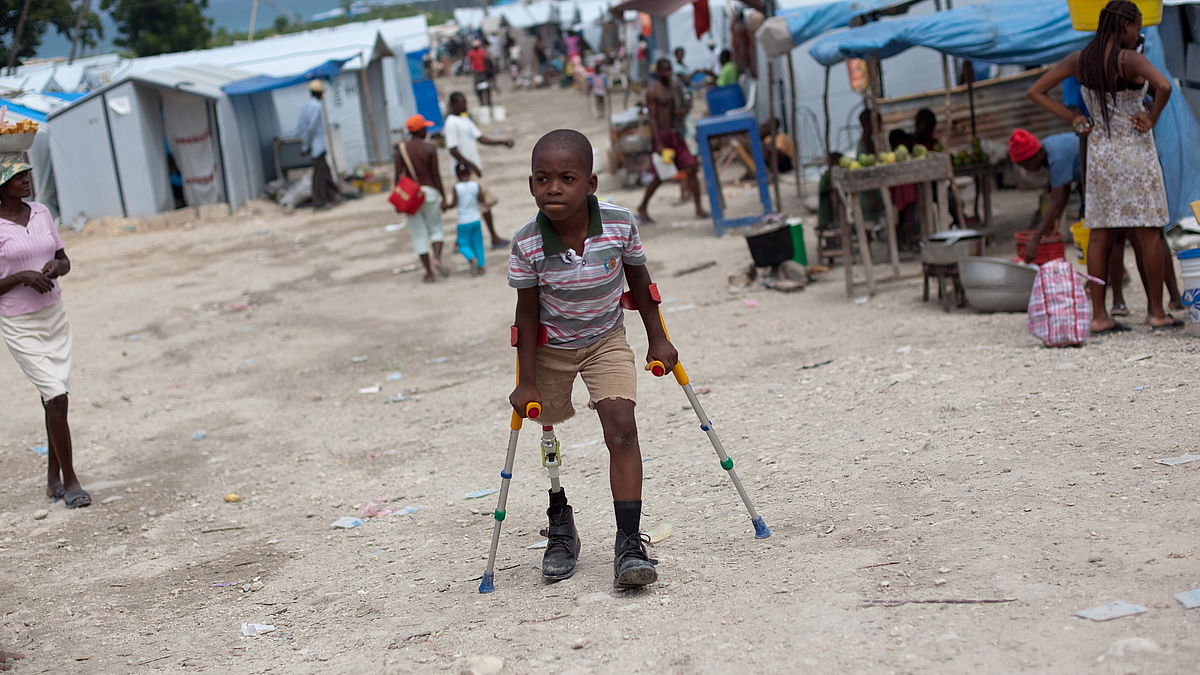
Disability Inclusive Disaster Risk Reduction (DiDRR)
CBM strives to reduce the impact of disasters on affected communities by mitigating and reducing risks.
Together with our partners, we help communities in high-risk areas across Asia, Africa and Latin America to protect lives, environment and livelihoods from calamities. Disaster prevalence is on the rise and people’s vulnerability especially in the global south has increased. CBM believes that disasters not only cause tremendous loss of people and their assets, but also reverses development gains and hinders progress.
People with disabilities, older people, pregnant women, children and other at-risk groups are often forgotten in Disaster Risk Reduction (DRR) and left behind when disaster happens. They are excluded from disaster preparedness measures, are invisible when it comes to community and risk mapping or evacuation planning, find it harder to access shelters and safe spaces due to environmental and attitudinal barriers or protection risks, and receive inadequate or inappropriate relief and support.
DRR can be broadly understood as the implementation of strategies and practices to reduce the occurrence of hazards, decrease the exposure and vulnerability of people and their assets, and strengthen the capacity of people to cope with their impact.
The international community recognises inclusion as a guiding principle of DRR, as reflected in the Sendai Framework for Disaster Risk Reduction. It acknowledges that DRR requires an all-of-society engagement and partnership, which promotes the empowerment and accessible and non-discriminatory participation of all people disproportionately affected by disasters, including people with disabilities.
DRR is increasingly recognised as an essential part of community development in a world threatened by, and increasingly experiencing, climate change, natural hazards and conflict-related emergencies. Inclusive DRR is needed to ensure that the Community Based Inclusive Development (CBID) approach contributes to sustainable, inclusive and resilient communities that can withstand disasters. Concurrently, CBID work is a vehicle for building resilient communities. The path to resilience is highly contextual, but always requiring a participatory approach. Only by working with persons with disabilities, communities can identify what is needed to increase resilience and reduce the risks in any particular context.
CBM firmly believes that its CBID work in disaster prone areas must incorporate a DIDRR component, post-emergency and long-term recovery work. This work is supported through technical advice at the global, regional and country levels, strengthened by the expertise from implementing CBID partners carrying out DIDRR work. In collaboration with CBM, these CBID partners, are documenting and sharing processes, lessons learned and success stories. For some examples, check out below: